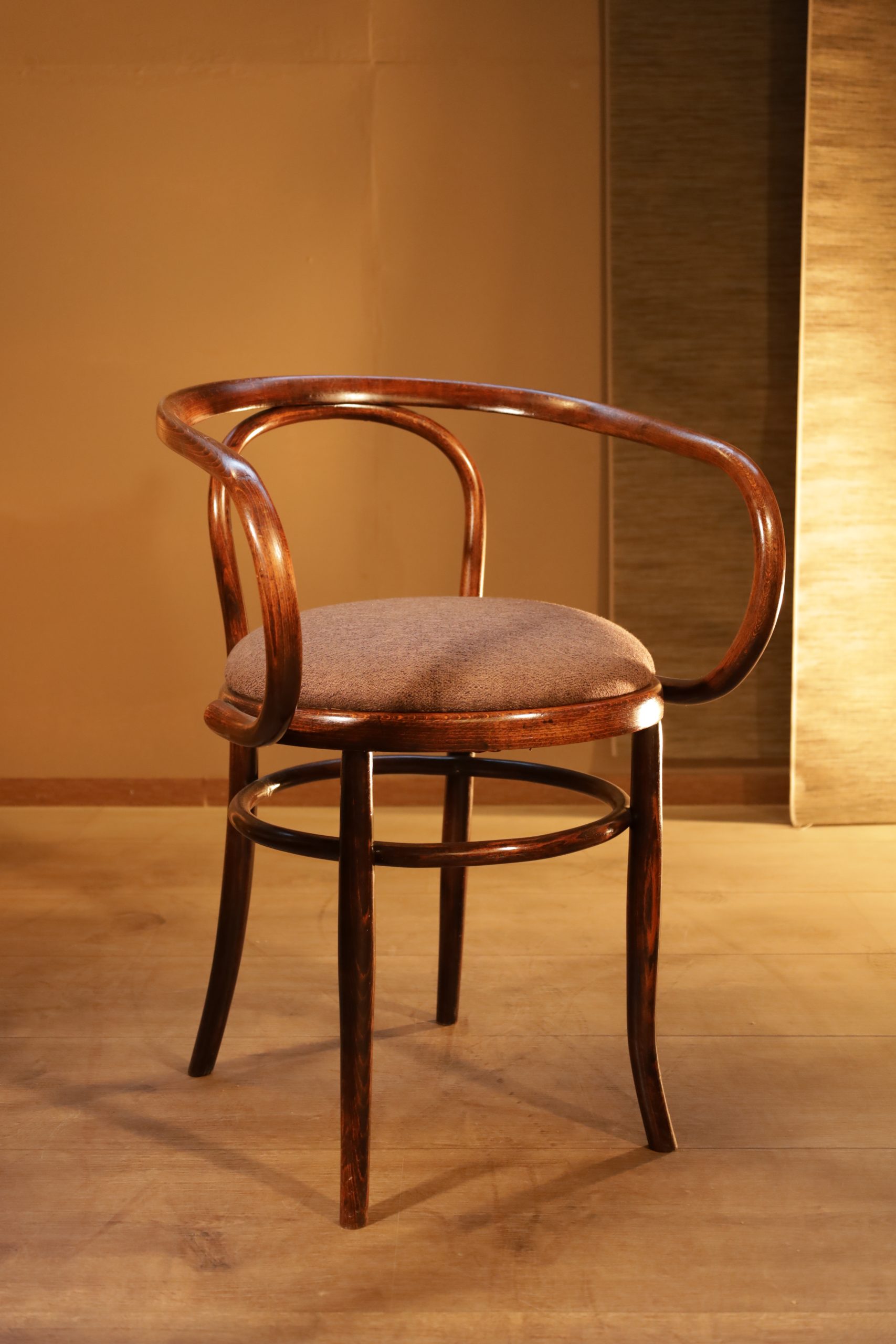Your basket is currently empty!

Art Nouveau furniture - A guide
Art Nouveau furniture epitomises the magic and elegance of the turn of the century.
Curved lines, ornate details and precious woods - they are the epitome of stylish lightness.
The term Art Nouveau is derived from the Munich magazine "Jugend", which was published from 1896 onwards. Internationally, this movement is known as Art Nouveau known in Austria as Secession style. Art Nouveau furniture brings a harmonious combination of art and nature into the home: floral patterns, flowing shapes and high-quality materials combine to create a unique style of living.
In this article, you will learn all about the origins and history of Art Nouveau furniture, its typical features and materials, famous designers and workshops - and why this historic furniture is back in demand today. We also provide helpful tips on what you should look out for when buying Art Nouveau furniture.
Origin and history of Art Nouveau furniture
Art Nouveau emerged as an artistic movement throughout Europe towards the end of the 19th century. Around 1890-1900, designers consciously turned away from the prevailing historicist styles. Instead of neo-Gothic or neo-Baroque, a new style was sought that expressed modernity and the spirit of the Belle Époque.
Nature served as the most important model. Art Nouveau was not a uniform style, but a whole series of regional trends. What they all had in common was a rejection of overloaded decorations in favour of an organic design language inspired by flora and fauna.
Centres included Paris, Nancy, Brussels, Munich and Vienna. In Switzerland, La Chaux-de-Fonds was home to the Style Sapin (fir style). Art Nouveau encompassed many areas - from architecture to glass and jewellery art to furniture design. Furniture should be part of an overall work of art.
Around 1905, the movement slowly died down. The 1910s brought stricter forms with Art Deco and Bauhaus. However, original Art Nouveau furniture has survived to this day - as timeless works of art with character.
Typical features and materials of Art Nouveau furniture
Art Nouveau furniture is recognisable:
- curved lines and asymmetrical shapes
- floral ornamentation (e.g. irises, lilies, leaves, tendrils)
- Animal motifs such as dragonflies, swans or peacocks
- No right angles - flowing silhouettes instead
Typical materials:
- Fine hardwoods: oak, walnut, mahogany, cherry
- Inlaid with mother-of-pearl, pewter, enamel or brass
- Glass: e.g. lead glass in display cases
- Brass or bronze fittings with floral shapes
- Surfaces: often finished with shellac or matt lacquer
Art Nouveau furniture combines decorative beauty with everyday functionality - in the spirit of the English style. Arts and Crafts-movement.
Famous Art Nouveau furniture designers and workshops
- Henry van de Velde: Belgian pioneer of Art Nouveau. Designed curved furniture early on. Founder of the School of Arts and Crafts in Weimar. Famous work: "Bloemenwerf" armchair.
- Wiener Werkstätte: Founded in 1903 by Josef Hoffmann and Koloman Moser. Designs such as the Kubus armchair or the "seating machine". Strong combination of craftsmanship, design and functionality.
- Louis Majorelle & Émile Gallé (École de Nancy): French furniture art with floral inlays and elegant shapes. Luxury pieces with high collector's value.
- German Art Nouveau: Bruno Paul, Richard Riemerschmid, August Endell. Thonet also produced bentwood furniture in the Art Nouveau style, e.g. with designs by Otto Wagner.
Art Nouveau furniture today: why is it back in demand?
Art Nouveau furniture is making a comeback - for several reasons:
- They set strong accents in modern interiors.
- They are made from natural materials and are sustainable.
- They offer quality craftsmanship and uniqueness.
- They combine functionality with artistic appeal.
Whether as a single piece or as part of an entire interior: Art Nouveau furniture enriches rooms with character and history.
Frequently asked questions about Art Nouveau - FAQ
Ca. between 1890-1910
In short: Art Nouveau is soft, natural and artistic - Art Deco is hard, shiny and stylised.
Art Nouveau: Organic, playful, floral lines, curved lines, plant motifs, asymmetry
Art Déco: Geometric, clear, luxurious, symmetry, zigzag, stepped shapes, circles
The founding period (ca. 1850-1890) was characterised by the Historicism - i.e. the deliberate imitation of past eras such as Gothic, Renaissance or Baroque. Furniture from this period is often massive, symmetrical and with many classic ornaments adorned. It was about representation, wealth and tradition. The shapes were mostly straight, angular and heavily decorated - designed to make an impression.
The Art Nouveau style (ca. 1890-1910), on the other hand, was a Conscious countermovementThe aim was to create something newthat stands out from the old styles. Art Nouveau furniture is clearly lighter, more playful and organic. Instead of historical ornaments, one uses floral patterns, curved lines and natural motifs. More emphasis was also placed on craftsmanship and new materials in production.
In short:
👉 Yesthey refer to the same art and design historical movement around 1890-1910,
but
👉 "Art Nouveau" is the German term, while "Art Nouveau" is the French name.
Differences in detail:
Art Nouveau was especially in Germany, Austria and Switzerland widespread.
Art Nouveau is called the same style in France, Belgium and internationally.
In England was his name Modern Style, in Spain Modernism (e.g. Gaudí), in Austria Secession style.
All variants share similar characteristics:
🌿 Curved lines, floral ornaments, craftsmanship and the idea, Bringing art into everyday life.
The same as Art Nouveau, it's just the French term for Art Nouveau.


 Hirschweg 3, 5312 Döttingen, Aargau, Switzerland
Hirschweg 3, 5312 Döttingen, Aargau, Switzerland +41 44 523 69 17
+41 44 523 69 17

